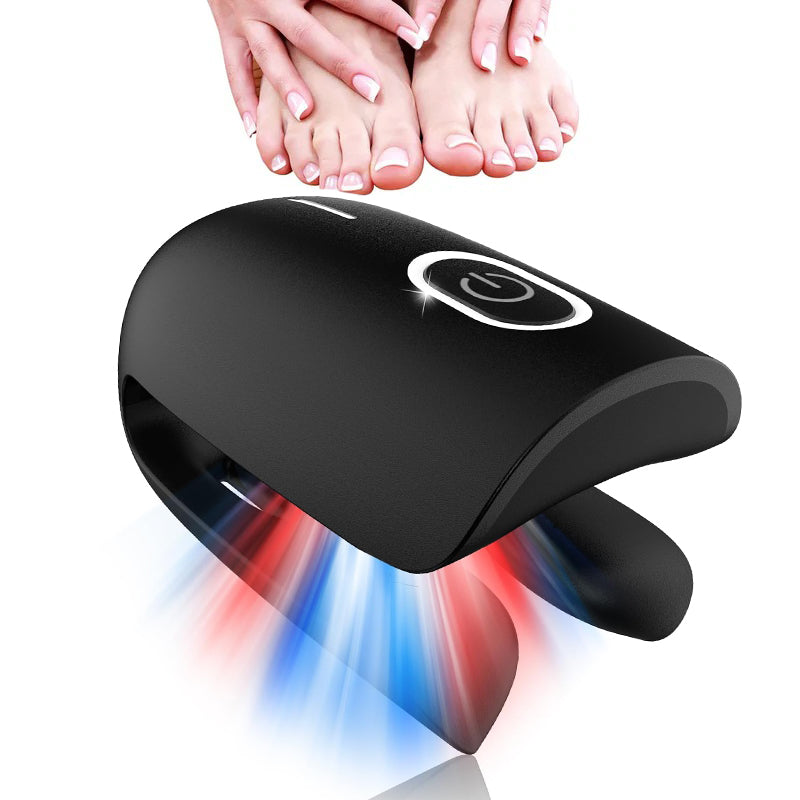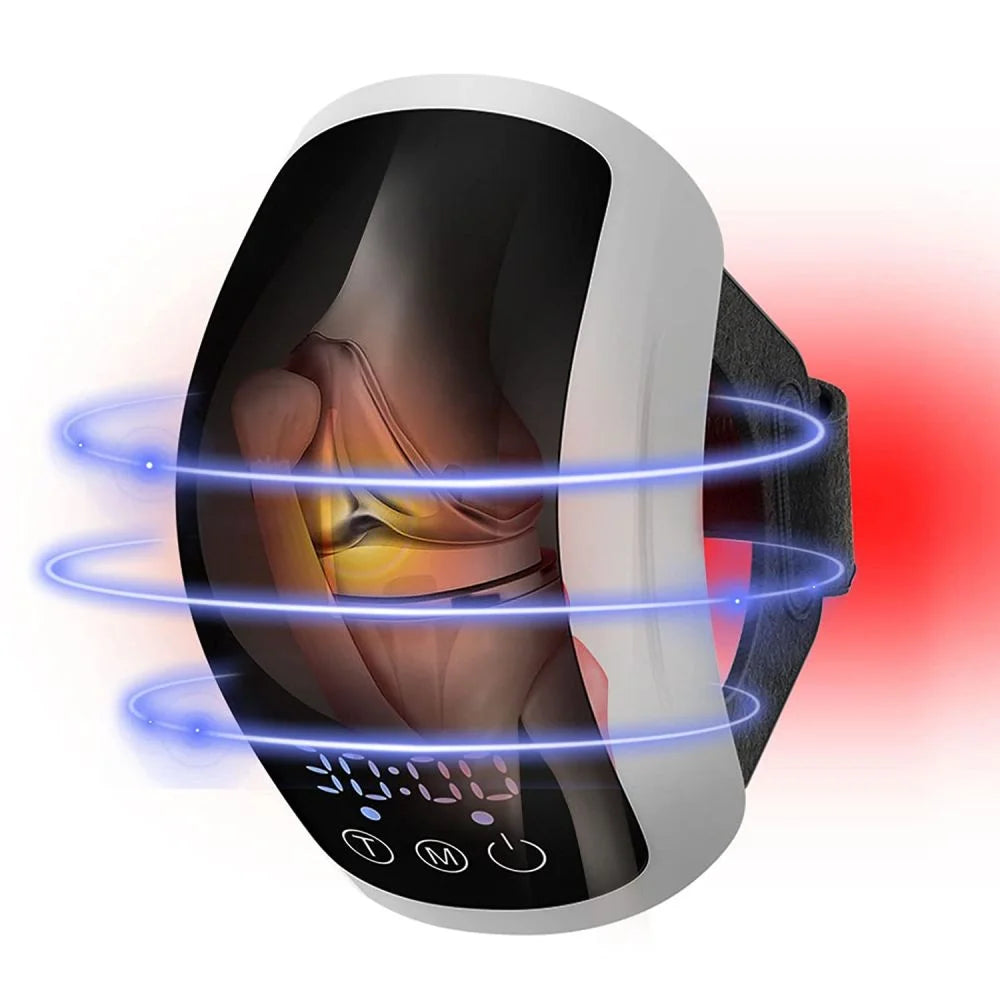Importance and Potential Applications
In our everyday lives, we often feel pain in our bodies when doing some physical work. These muscle pains are sometimes felt as deep body aches or sharp pains. Muscle pains can affect your whole body or sometimes specific areas. According to research, almost 50-80% of adults experience an episode of either severe or mild back pain at least once in their lifetimes. There are various methods for relieving muscle pains, including relaxation techniques, medications, and herbal supplements. However, infrared light therapy is a modern, painless, and simple method of treating muscle pains.
Infrared light is a type of electromagnetic radiation that can penetrate 2-7 cm deep into the skin. It can reach the muscles, nerves, and bones, prompting quick healing and relieving pain. A key advantage of infrared light is its safe, non-invasive, and painless nature. The use of Infrared light to ease muscle pain and speed up the body’s healing process is known as infrared light therapy. It is now used to treat patients with acute or chronic muscle pains.
What is Infrared Light Therapy?
Infrared light therapy is a pain treatment method that medical specialists and physiotherapists use to treat a range of chronic or acute muscle pains. These may include pain from any sport’s injury, chronic pain, pain from some trauma, etc. Infrared light therapy helps relieve pain by improving the healing mechanism and reducing inflammation. Infrared light helps repair and regenerate damaged tissues. It enhances the circulation of oxygen-rich blood in the body, which helps with quick healing and reducing pain.
How does Infrared Light Therapy Work
Infrared light has wavelengths longer than the range of our vision and is outside the visible light spectrum. It has a wavelength of 700nm to 1mm and is not visible to the eye. These invisible infrared lights can penetrate the body’s tissues at the point of pain or injury. Infrared light can reach the greater depths of the skin and heal the tissues, bones, or muscles at the site of pain. Amazingly, this process is painless and does not damage the skin.
When infrared red light reaches the cells in the body, the photoreceptors absorb the light. As a result, a series of metabolic reactions start, which trigger the natural process in the body on the cellular level. This stimulates the healing of muscles, thus relieving the pain. A significant impact of infrared light therapy is that the level of nitric oxide in your body increases. Nitric oxide naturally occurs in the body and is a key signaling molecule. It helps promote blood flow and drains the leaked tissue fluid back into circulation.
The increase in blood flow through infrared light therapy has several advantages. It assists in bringing oxygen-rich blood to the areas of pain. It also helps prevent the platelets from clustering in the veins. The improved blood flow regulates the blood pressure and relieves the stress on arteries. The drainage of leaked tissue fluid helps control the inflammation and reduce swelling. Infrared light also facilitates the production of feel-good chemicals known as endorphins. These chemicals, along with nitric oxide, act as pain relievers and reduce the effect of pain.
The effectiveness of infrared light therapy and its therapeutic impact depends on factors including irradiance, treatment frequency, and the wavelength of light used. Light-emitting diodes (LEDs) are used to apply concentrated infrared light to the point of pain, enhancing the body’s healing capacity. Since infrared light is safe to use, compared to ultraviolet light, it helps reduce pain.
What Types of Muscle Pain Does Infrared Light Treat?
If you are suffering from any type of muscle pain, acute or chronic, infrared light therapy can be used to treat it. Infrared light therapy helps treat neck aches, knee pains, shoulder pains, wrist issues, feet and hand pain, etc. Some of the other muscle pain and medical conditions that are treated by infrared light therapy include:
Arthritis
Arthritis is the inflammation of joints, making it hard for the body to move and function properly. Osteoarthritis is the most common type of arthritis; more than 528 million people suffer from this disease worldwide. Infrared light therapy can be used to treat arthritis. Infrared light penetrates deep into the tissues, which helps in relieving joint stiffness and improving mobility. According to a study, infrared light therapy reduces joint pain by 50%.
Tendonitis
Tendonitis is the inflammation of tendons (connective tissues between muscles and bones). The inflammation results in muscle swelling, causing pain and discomfort. Infrared light has a strong anti-inflammatory effect that helps reduce tendons' inflammation and relieve pain. It also heals the surrounding inflamed soft tissues and is safe to use.
Migraines
A migraine is a type of headache in which a person suffers from severe pain, usually on one side of the head. Other symptoms include nausea and sensitivity to light and noise. Infrared light therapy can be used to reduce the pain of migraines. The infrared light penetrates the skin and prompts cell repair, which helps in relieving pain and reducing inflammation.
Sports Injuries
Many athletes suffer from various injuries while playing sports or during workouts. The nature of these injuries ranges from mild to severe. Infrared light therapy helps relieve pain and heal the sore and damaged muscles. When the affected muscles are exposed to infrared light, the blood circulation increases, and the muscle repairs quickly. Infrared light therapy also helps reduce lactic acids, eventually resulting in muscle relaxation.
Nerve Pain
Nerve pain occurs when the nerves that carry sensation to the brain are affected by some health conditions. A person suffering from nerve pain feels numbness, tingling, or electric-shock-like pain. In infrared light therapy, lights of different wavelengths are applied to the target area to heal the damaged or affected nerve. It is a safe pain-relieving method with little to no side effects.
Other Health Benefits of Infrared Light Therapy
The best source of energy for the body is sunlight. However, the radiation from the sun is made up of ultraviolet and infrared rays. The ultraviolet rays are the harmful ones causing sunburns and other health problems such as skin and eye diseases. Infrared light therapy helps utilize the beneficial infrared radiation without exposing oneself to ultraviolet radiation. Infrared light therapy not only helps relieve muscle pain but also plays a vital role in detoxification, improved blood circulation, and weight loss. It can also help lower the side effects of diabetes and blood pressure, boosting the immune system and purifying the skin. Some other health benefits of infrared light therapy include:
Improved Cardiovascular Health
Infrared light therapy significantly improves cardiovascular health. The increased production of nitric oxide helps improve blood vessels' health. Nitric oxide keeps the arteries relaxed and prevents blood clotting in the veins. It also regulates blood pressure and prevents oxidative stress by combating free radicals. The improved production of nitric oxide increases the blood circulation. Resultantly, oxygen-rich blood and nutrients reach the injured tissues and speed up the healing process. This stimulates the tissues’ regeneration and reduces pain and inflammation.
Reduced Pain and Inflammation
Infrared light therapy is a simple, effective, safe, and painless treatment for relieving pain and reducing inflammation. The infrared light penetrates deep into the skin and reaches the bones and muscles. It improves blood circulation, fastens the healing process of the injured tissues, and prevents oxidative stress.
Detoxification
There are saunas for infrared light therapy. In these saunas, the body’s core temperature rises, which leads to detoxification at the cellular level. Detoxification helps in strengthening the immune system. It also assists in the proper functioning of biochemical processes in the body, which helps in improved food digestion.
Cancer Treatment
Infrared light therapy can be a potentially viable cancer treatment. One such treatment is photo-immunotherapy, in which infrared light kills cancer cells by binding these cells with antibody-photo absorber conjugate. This treatment is currently in clinical trials with patients having inoperable tumors.
Do Infrared Light Therapies Have Any Adverse Effects?
Although using Infrared Light for muscle pain treatment is completely safe, it is better to understand the effective use of the technology. According to a study, 40 patients suffering from chronic lower back pain were examined for six years. The patients used wearable devices emitting infrared light to treat the back pain. All the patients reported significant pain reduction with no harmful effects. However, patients opting for infrared light therapy should strictly follow the treatment procedures recommended by the experts. Also, patients suffering from heart disease and pregnant women should not go for infrared light therapy.
Conclusion
Infrared light therapy is a safe, non-invasive treatment method for relieving pain and reducing inflammation. This therapy can help eliminate pain or reduce it to a manageable level so that there is little or no requirement for medicine. The infrared light can penetrate deep into the skin, reaching the bones and tissues and improving the healing process. There are also several other health benefits of infrared light therapy. This therapy is utilized worldwide and is one of the fastest-growing industries in medical innovation.



























